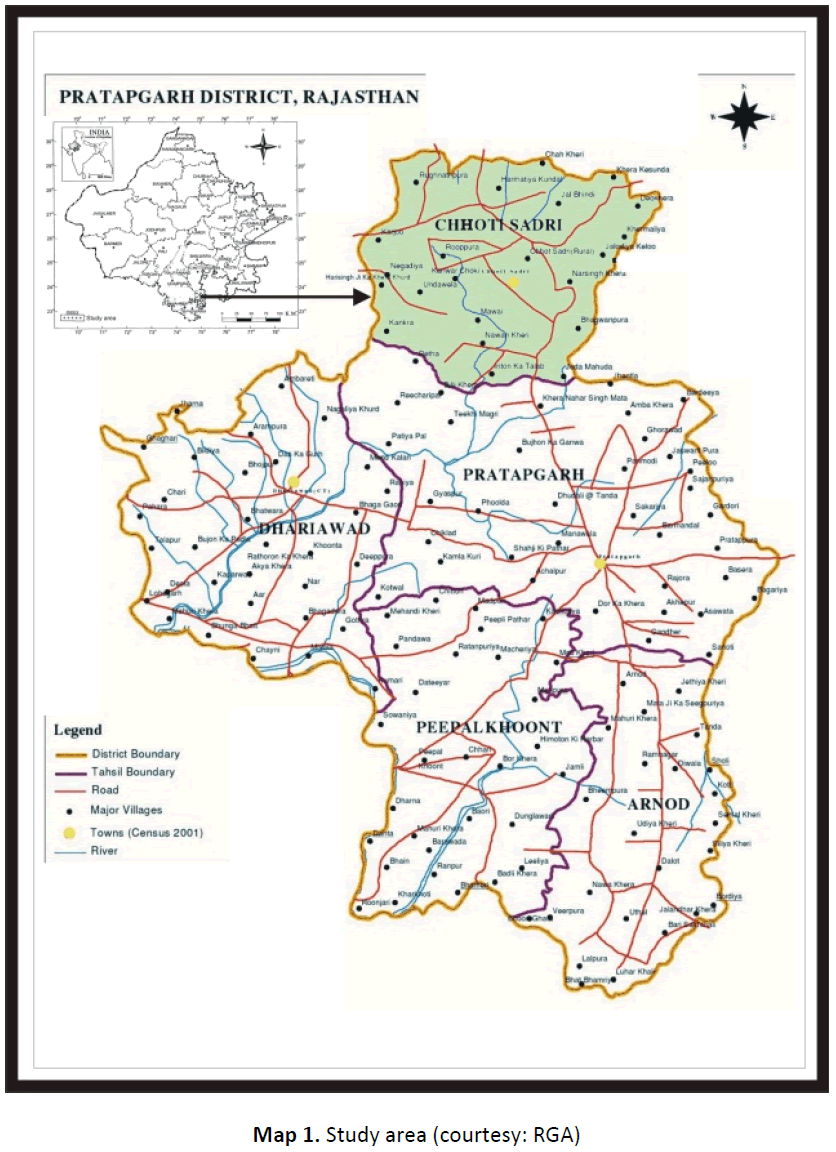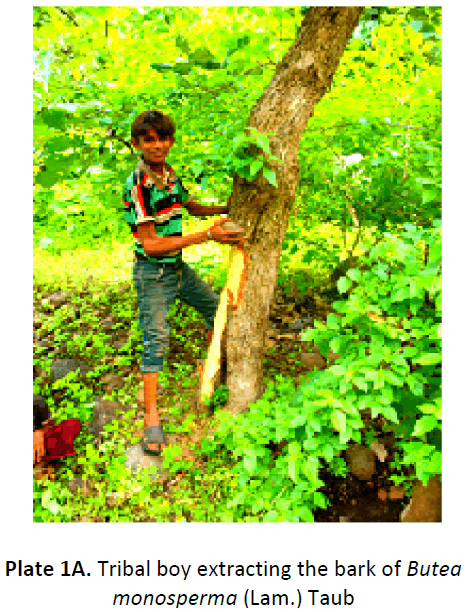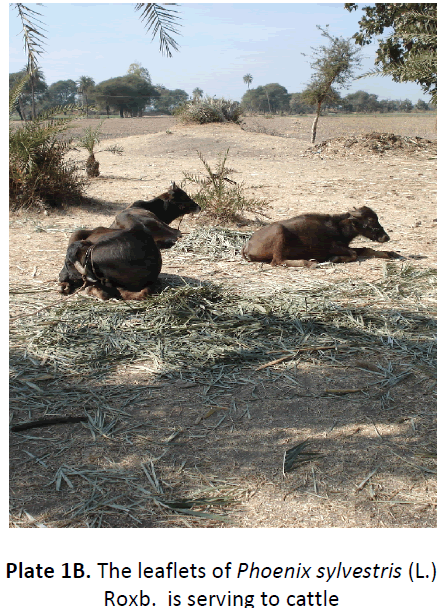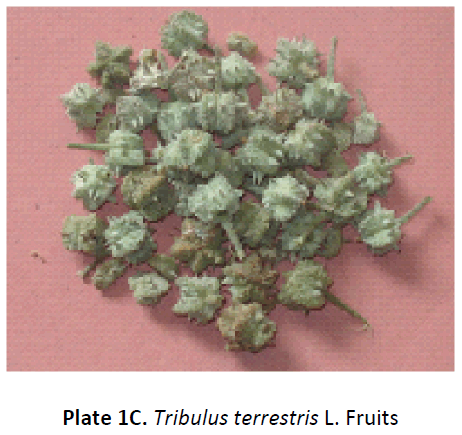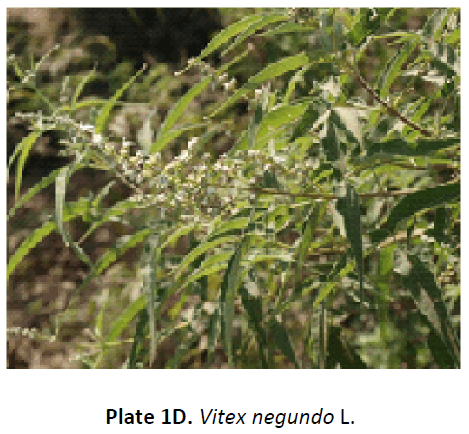Some Traditional Ethno-veterinary Plants of District Pratapgarh, Rajasthan, India
Laboratory of Plant Taxonomy, Department of Botany, MLV Government College, Bhilwara- 311 001, Rajasthan, India
Abstract
Evolution of human life has directly or indirectly been associated with the influenced by the surrounding environment. Tribes live closely associated with nature and completely dependent on nature for their survival. Because of the rapid changes in the communities all over the worlds, traditional veterinary knowledge is in danger of extinction. Keeping this in mind the field trips conducted in tribal dominated part of the district, with the local medicine men and author enumerates 24 ethno-veterinary plant species of 24 genera and 23 families used by the tribes of Pratapgarh district in Rajasthan. During the study various diseases related to domestic animals affecting different body part such as feet, indigestion, mouth, neck, placenta separation, skin, swelling, tumors, urinary diseases and wounds were observed during the study. Information on the traditional uses of medicinal plants gathered from the tribes with their botanical identity, local name and mode of administration are presented in this paper.
Keywords
Traditional, Ethno-veterinary plants, Pratapgarh, Rajasthan, India.
INTRODUCTION
Rajasthan is situated in the North-western part of India between 23° 30′ - 30° 11′ N latitude and 69° 30′- 78° 17′ E longitude and covers an area of 3, 42, 239 sq km which is 10.4% of the country’s total area. Pratapgarh is newest constituted district in Rajasthan state. It came into existence on 26th January 2008 as 33rd district of Rajasthan. It was carved out from Chittorgarh, Udaipur and Banswara district. Pratapgarh is situated in the southeastern part of Rajasthan in Chittorgarh district. The district situated in the junction of the Aravali mountain ranges and the Malwa Plateau area, these geographical area adjoins Udaipur and Chittorgarh districts of Rajasthan and Mandsaur of Madhya Pradesh; hence the characteristics of both prominently feature was noticed in this area. Pratapgarh is located at 24.03° N latitudes and 74.78° E longitudes. It has an average elevation of 491 meters (1610 feet) (Map.1).
Climate of Pratapgarh districtt is moderate as the district lies in-between dry climate of western part and humid climate of southern part of Rajasthan. Average minimum temperature of the tehsil ranges from 15-17ºC and an average maximum temperature is ranging between 27.5ºC to 30.0ºC. The normal annual rainfall of the tehsil is 74.54 cms, and lasts from July to September. The normal rainy days are about 32 a year. Geologically, the district consists of Banded gneissic complex and Bundelkhand gneiss, Vindhyan, Aravalli and Delhi Systems. The district is rich in minerals, such as mica, soapstone, sandstone, iron ore, beryl, asbestos, calcite and garnet. This area is characterized by the tropical deciduous type of vegetation consisting of Acacia leucophloea (Roxb.) Willd., Acacia nilotica (L.) Willd. ex Del., Anogeissus latifolia (Roxb. ex DC.) Wall. ex Guill & Perr., Anogeissus pendula Edgew, Balanites aegyptiaca (Linn.) Delile., Boswellia serrata Roxb., Diospyros melanoxylon Roxb., Madhuca indica J.F. Gmelin, Tectona grandis L. etc. as the important plant species.
The tribals, namely Bhil and Meena residing in this district of Rajasthan. Majority of the tribal population fall below poverty line and are the main dwellers of these forests. The surrounding environment of these people are an integral part of their lifestyle and culture. Knowledge of the medicinal plants as well as cultural system gets passed on from generation to generation through oral talk or folk songs.
In India several workers contributed that significant knowledge on ethnobotany [1-7]. Recently ethno medicinal practices of pteridophytic plants has been studied in the western ghats [8]. Two important plants used in Rajasthan as antimalarial properties has be studied [9].
However, the Indian desert, due to its geographical position, environment, topography and socio-economic conditions, may be credited first which drawn the attention of ethnobotanical workers, who recorded the wild plants which are used as famine food and vegetable products as food in deserted zones of the state [10,11]. Subsequently, some more ethnobotanical information furnished for Ajmer [12]. During recent years, some more workers have added a lot to our knowledge on the ethnobotany of Rajasthan [13-22].
In Rajasthan, ethnobotanical studies have been carried out by several botanical workers from different areas. However, the ethno-veterinary studies on Pratapgarh district are scantier. Therefore, to collect the recent information about ethno-veterinary plants used by tribals in their traditional healthcare system for their animals. The study, regarding animal healthcare is based on interviews, by tribals inhabitant in this area.
MATERIAL AND METHODS
Field trips were conducted with the local medicine men. Due to religious faith of tribals, the people who know about the medicinal properties of plant do not want to give all the information because the medicinal plant is disclosed its medicinal properties will be lost forever. For this reason, the information collection from the tribals is an important task. The peoples who can provide information from one locality, were consulted at other localities. It resulted authentic information about medicinal properties of plants and the information collected during fieldwork were verified at different places through different informants and in different seasons.
The plant species belongs to ethnoveterinary value have been collected with the help of the informants, plant specimen was collected and photographs were shooted. The species were identified with the help of reputed literature [23-26]. The voucher specimens were deposited, to the Herbarium, Department of Botany, M. L. V. Government College, Bhilwara.
RESULT AND DISCUSSION
The data on ethno-veterinary plants documented are locally available and easily accessible is the seasonal availability of certain plants for off-seasonal uses the tribals acquired different ways to preserve them. The sun drying method is the most common way of preserving the plant and the plant product. The plants are used to cure animal diseases are survey during the present study. The ethno-veterinary plants of Pratapgarh district were enumerated as their botanical name, local name, family and the traditional methods of administration in different ailments are being presented in Table 1. In the enumeration, plant species with their botanical names are arranged alphabetically, followed by family, local names and methods of administration.
Table 1: Some traditional ethnoveterinary plants in Pratapgarh, Rajasthan, India
| S. N. | Plant name | Family | Local name | Methods of administration |
|---|---|---|---|---|
| 1. | Butea monosperma (Lain.) Taubert | Papilonaceae | Khankra | The dry powders obtained from flowers are used to dressing on cuts and wounds 1 kg of fresh bark is given once a day to cure weakness in animals (Plate 1A). |
| 2. | Calotropis procera (Ait.) Ait. f., | Asclepiadaceae | Akra | Smokes of stem are produced to cure Khurpaka diseases. The water of animal flesh is applies on feet of cattle to cure this disease. |
| 3. | Capsicum annuum L. | Solanaceae | Mirchi | The paste of red chillies are applied on Khur to cure Khurpaka diseases. |
| 4. | Crotalaria burhia Buch.- Ham. | Papilionaceae | Sinio | Roots is boiled, filtered and given orally to expel retained placenta. |
| 5. | Cucumis melo L. | Cucurbitaceae | Kachra | Fruit paste mixed with Butter or water is given to animal to cure dysentery and gastric problems. |
| 6. | Curcuma longa L. | Zingiberaceae | Haldi | Hindura, disease caused by worms is treated with rhizomes. |
| 7. | Cyamopsis tetragonoloba (L.) Taub. | Papilionaceae | Guar | Seeds are boiled, filtered and kept for whole night. Next day, mixed with oil, are given orally four times a day, in the morning to cure weakness. |
| 8. | Dendrophthoe falcata (L. f.) Etting | Mimosaceae | Dudeli | Leaves are tide on fractured bones. |
| 9. | Dichrostachys cinerea (L.) Wight & Arn. | Mimosaceae | Goya-Khair kolai | Extract of root bark is mixed with extract of stem bark of Butea monosperma and Ziziphus mauritiana Lam. and ¼ cup juice + 3/4 cup of water is used, only one dose is sufficient to cure stomachache. |
| 10. | Euphorbia caducifolia Haines | Euphorbiaceae | Thor | Munda ana (Mouth desiseas) were cured with the latex of stem. |
| 11. | Ficus racemosa L. | Moraceae | Umar | Bark paste is mixed with stem sap of banana plant; filtered is given to the animal orally to cure diarrhoea during rainy season. |
| 12. | Grewia abutilifolia Vent. ex. Juss | Tiliaceae | Gengchi | In case of bone fracture, after 3 days of fracture, sun dried root poweder used to make decoction. 1/2 cup of this decoction is given once a day for 3 days to animals. |
| 13. | Madhuca indica J.F. Gmelin | Mori | Sapotaceae | The seed oil of Brassica campestris L. is applied on the fresh leaves. The leaves are tide on the swelling to reduce pain. The liquor prepared from corolla is also given to cattle to cure indigestion. |
| 14. | Nicotianum tabacum L. | Solanaceae | Tanbakhu | Dried leaves of Nicotianum tabacum L. and mature fruit powder of Capsicum annum L. are given orally to cure Haldariya (haematuria; blood are seen with urin). |
| 15. | Phoenix sylvestris (L.) Roxb. | Aricaceae | Khajur | The fresh leaflets are given to cattle to cure general weakness. It is also a diet during famine (Plate 1B). |
| 16. | Ricinus communis L. | Euphorbiaceae | Arandi | 2 gm of seed cotyledones is given to animals to cure stomach. |
| 17. | Saccharum officinarum L. | Poaceae | Santa, Hanta | The dried leaves used during Gowardhan pooja (Festival during dipawali) are eaten to cattle to separate the placenta after delivery. |
| 18. | Sorghum helepense (L.) Pers. | Poaceae | Bru | The inflorescence or caryopsis are given to animal to cure diarrhoea and weakness. |
| 19. | Tephrosia purpuria Pers. | Papilionaceae | Biyani | Whole plants are boiled in 1 bucket of water and bath given to animal to cure skin diseases. |
| 20. | Trachyspermum ammi (L.) Sprague | Apiaceae | Ajvian | Fresh seeds or seed powder is given to cure Afra (Indisation in animal). The stem is also given to cure this disease. |
| 21. | Tribulus terrestris L. | Zygophyllaceae | Gokhru | Fruits are mixed with healthy fodder to increase lactation in cattle; It is also given to ox to cure weakness.(Plate 1C) |
| 22. | Trigonella foenum-graecum L. | Papilionaceae | Methi | Fresh mature plant or boiled seeds are fed to increase lactation in animals. |
| 23. | Trumfetta rotuntifoliaLam. | Tiliaceae | Lapta | The root Infusion is applied to cure neck sores. |
| 24. | Vitex negundo L. (Plate 1D) | Verbinaceae | Negdia | 200 gms of fresh or dried leaves are given to cure stomachs. |
During the present study, 24 plant species are belonging to 24 genera and 23 families being used by tribes of Pratapgarh to treat various diseases such as skin, wounds, tumor’s, swelling, lice’s, urinary diseases, mouth, feet, head.
CONCLUSIONS
The study is based on exhaustive interviews with local people, shepherds, tribals and nomads (Traveller with sheep from Marwar region of India). During the study 24 plant species belonging to 23 families as well as some animal products were recorded which are being used to cure various diseases such as feet, head, lices, mouth, neck, placenta, skin, swelling, tumors, urinary diseases and wounds.
The most common cattle diseases and problems include bottleneck, diarrhea, durdi mata, enterotoxaemia, foot and mouth disease, hematuria, obstipation, orf, pneumonia, respiratory diseases and sheep pox were recorded. The commercially liquor is also used to cure indigestion in animals. The different kinds of oils, salt solutions, naphthalene balls or Potassium Permanganate has also been used for animal treatment. Some faith is strictly followed by tribals in this area. Like placenta separation and immediate deposited is an essential part of animal health. It is believed when placenta is eaten/consumed by mother (recently mother), milk production is stop during this delivery tenure.
A list of plant species along with family, local name and methods of administration are enumerated. The present study has added a lot to our knowledge on the ethno-veterinary knowledge from Rajasthan.
ACKNOWLEDGEMENTS
Authors are highly thankful to all the tribal informants for their cooperation and help during ethnobotanical study. Help rendered by Shree Bheru Lal Bhil, Bhanwar Lal Meena, Chunni Lal Meena, Limba Ram Ji, Modan Ji, Nana Ram Ji, Ram Chandra Ji, Salira Ram Ji and Vikram Ji by way of providing traditional knowledge is thankfully acknowledged. Thanks are also due to Shri Bhanwar Singh Ji Meena, Additional Superintendent of Police, for his cooperation during these studies. Authors are thankful to Principal, Prof. K. R. Jharoliya, Vice Principals and Dr. B. L. Yadav, head department of botany, MLV Government College, Bhilwara for providing the facilities. Financial assistance provided by UGC Bhopal is gratefully acknowledged.
Photographs: All were shooted during the study by author.
REFERENCES
- Jain, S. K., 1975. Medicinal plants, 2ndedn., (National Book Trust of India, New Delhi).
- Rao, R. R., 1981. Ethnobotany of Meghalaya: Medicinal plants used by Khasi & Garo tribes, Econ. Bot., 35: 4-9.
- Gangwar, A. K. and P. S. Ramakrishnan, 1990. Ethnobiological notes on some tribes of Arunachal Pradesh, north-east India, Econ. Bot., 44: 94-105.
- Abbas, J. A., A. A. El-Oqlash and M. Mahasneha, 1992. Herbal plants in the traditional medicine of Bahrain, Econ. Bot., 46: 147-153.
- Mannandher, N. P., 1995. An inventory of some herbal drugs of Myagdi district Nepal, Econ. Bot., 49: 371-379.
- Hedge, R., S. Suryaprakash, L. Achoth and K. S. Bawa, 1996. Extraction of non-timber forest products in the forest of Biligiri Rangan Hills India 1 Contribution to rural income, Econ. Bot., 50: 243-251.
- Joshi, P., 1995. Ethnobotany of the Primitive Tribes in Rajasthan. Printwell, Jaipur.
- Santhos, K.S, P. Samydurai and N. Nagarajan, 2014. Indigenous Knowledge on Some Medicinal Pteridophytic Plant Species Among the Malasar Tribe’s in Valparai Hills, Western Ghats of Tamilnadu. American Journal of Ethnomedicine. 1 (3): 164-173.
- Bapna, S., M. Ramaiya and A. Chowdhary. 2014. Antimalarial Potential of Plants Used as Chewing Sticks for Oral Hygiene in Rural Areas of Rajasthan, India. American Journal of Ethnomedicine. 1 (5): 319-325.
- King, G., 1869. Notes on famine foods of Marwar. Proc. Asiat. Soc. Bengal, pp: 116- 121.
- King, G., 1870. Notes on vegetable products used as food during late famine in Rajputana. Trans. Bot. Soc. Edinb., 10: 198.
- 12. Irwin, H., 1895. Some account of the general and medicinal topography of Ajmer. W. Thacker and Co., Calcutta.
- Katewa, S. S. and A. Arora, 1997. Some plants of folk medicine of Udaipur district, Rajasthan, Ethnobotany, 9: 48 - 51.
- Meena, K.L., 2013. Traditional Uses of Ethnobotanical Plants for Construction of the Hut and Hamlets in the Sitamata Wildlife Sanctuary of Rajasthan, India. J. Energy Nat. Res., 2(5): 33 – 40.
- Meena, K. L. and B. L. Yadav 2010. Ethnomedicinal Wisdom of Garasia tribe in Rajasthan, India. International Folk and Herbal Medicine Conference. M. L. Sukhadia University, Udaipur, Rajasthan. pp 30.
- Meena, K. L. and B. L. Yadav 2010. Some Ethnomedicinal Plants Used by Garasia Tribes in Rajasthan. (In: Trivedi, P. C. (Eds.) Recent trends in Botany. Aavishkar Publishers, Distributors. Jaipur. pp.1 - 45.
- Meena, K. L. and B. L. Yadav 2010a. Studies on Ethnomedicinal plants conserved by Garasia tribes of Sirohi district, Rajasthan, India. I. J. Nat. Pro. Res., 1(4): 500 - 506.
- Meena, K. L. and B. L. Yadav 2006. Some important medicinal plants of Bhilwara district Rajasthan, India. Proceedings National Conference on Biodiversity Conservation. MLV Govt. College, Bhilwara. pp. 84 - 89.
- Meena, K. L. and B. L. Yadav 2007. Some ethnomedicinal plants of Rajasthan. In: Trivedi, P. C., (Eds.) Ethnomedicinal Plants of India. Aavishkar publishes Distributors, Jaipur. pp. 33 - 44.
- Meena, K. L. and B. L. Yadav, 2008. Floral resources of Rajasthan with special referance to Sitamata wildlife sanctuary. Geographical aspects. Proceedings of the 35th National conference of Rajasthan geography Association. MLV Government College, Bhilwara. Vol. IX: 56 - 65.
- Meena, K.L., V. Dhaka and P. C. Ahir, 2013.Traditional Uses of Ethnobotanical Plants for Construction of the Hut and Hamlets in the Sitamata Wildlife Sanctuary of Rajasthan, India. J. Energy. Nat. Res., 2 (5): 33-40.
- Trivedi, P. C. 2002. Ethno-medicinal plants of Rajasthan State India. In: P.C. Trivedi (Ed.) Ethnoboatny. Aavishkar publishes Distributors. pp. 412 - 439.
- Shetty, B. V. and V. Singh, 1987. Flora of Rajasthan. Vol. I. BSI. Howrah.
- Shetty, B. V. and V. Singh, 1991. Flora of Rajasthan. Vol. II. BSI. Howrah.
- Shetty, B. V. and V. Singh, 1993. Flora of Rajasthan. Vol. III. BSI. Howrah.
- Yadav, B. L. and K. L. Meena, 2011. Flora of South Central Rajasthan. Scientific Publishers, Jodhpur.
Open Access Journals
- Aquaculture & Veterinary Science
- Chemistry & Chemical Sciences
- Clinical Sciences
- Engineering
- General Science
- Genetics & Molecular Biology
- Health Care & Nursing
- Immunology & Microbiology
- Materials Science
- Mathematics & Physics
- Medical Sciences
- Neurology & Psychiatry
- Oncology & Cancer Science
- Pharmaceutical Sciences
